Before the famous and powerful die, notice of their death is often already written. When death comes – the details are polished, dates added, and their stories get shared.
When regular people die, that work falls to family or friends, scrambling to make final arrangements and remember details while grieving.
But there’s always been a middle space — where newsrooms can recognize lives lost through reported obituaries on regular people. As newspapers shrink and close, that space has gotten smaller and smaller.
Two and a half years ago, I started an experiment with Poynter and the Tampa Bay Times to test a couple theories: People will read feature obituaries in a digital format. Those stories can drive loyalty through digital subscriptions or membership. And they can help us remember what we have in common.
That experiment turned into a 2020 fellowship with the Reynolds Journalism Institute at the University of Missouri. And that fellowship has brought data and some conclusions to my hypothesis. It’s also shown me that I’m not alone in believing feature obituaries are important, worth rethinking and reviving.
“We all know people who we think are so cool, or interesting, or exciting, but a lot of times those stories vanish if no one is there to tell them,” one person told an advertising class of students I worked with last semester at MU. “That’s why obituaries are important — because they preserve those stories and highlight those ordinary people that make the world a better place.”
This report details three pieces of this work so far:
- The numbers case for feature obits
- Lessons from writing feature obits
- How we launched an obits newsletter
I hope this work can offer a blueprint for newsrooms, reporters and anyone who thinks remembering the stories of the dead matters.
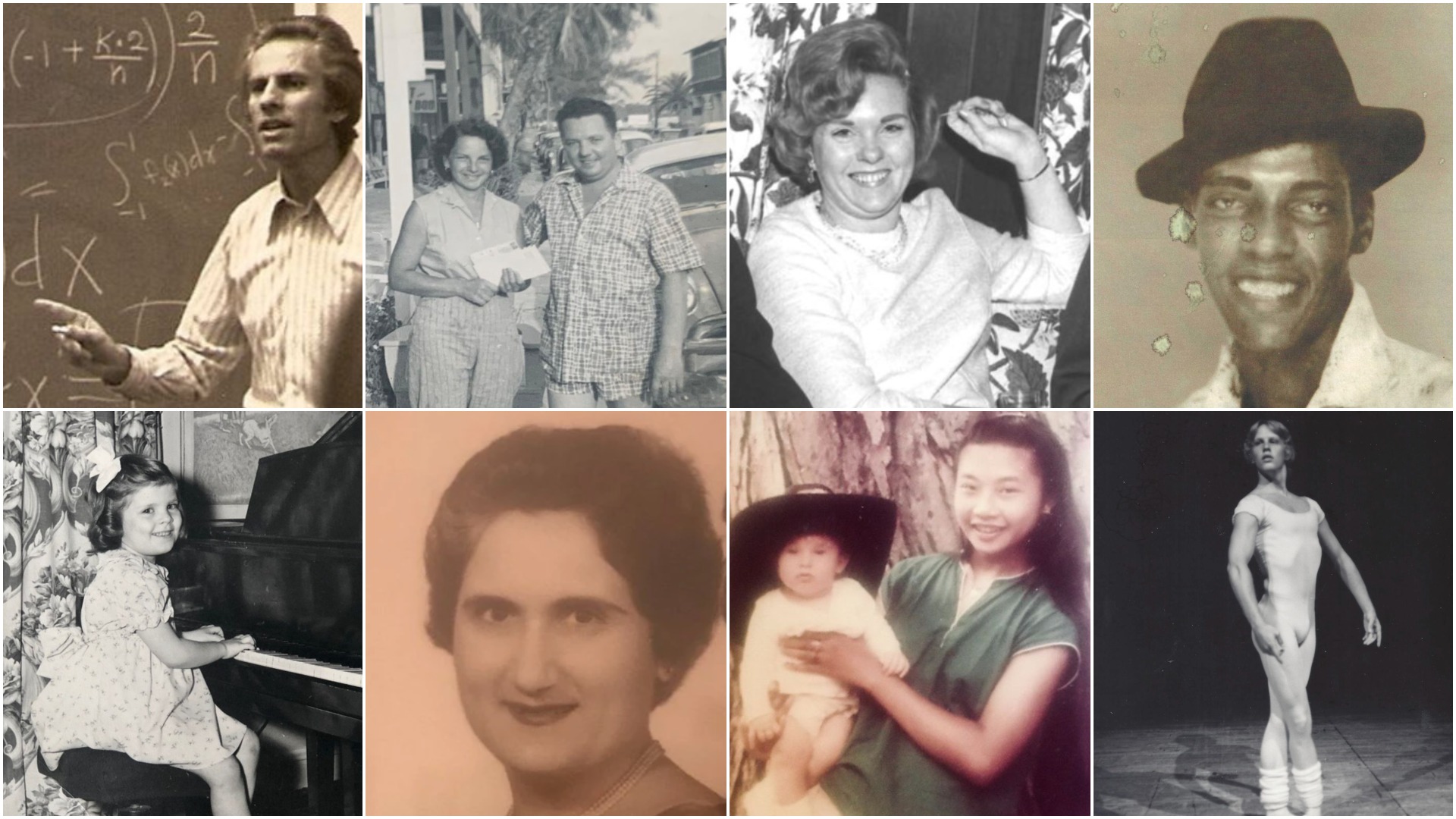
Pictured top left to right: Rosario Urso, Mary Falkenstein, Louis Schmechel and William Blackshear. Bottom left to right: Zola Shaulis Kollock, Mary Poniros, Viengpasong Luangsouphom and Sean Musselman. (Submitted photos)
The numbers case for feature obits
Since starting my fellowship with RJI in July of 2020, I’ve written a weekly feature obituary nearly every week — a total of 40 feature obits.
They generated:
- Nearly 200,000 pageviews
- Nearly 300,000 engaged minutes
- 226 people clicked over to the Times subscription or digital subscription page after reading an obit
- An average read time of about 1 minute, 30 seconds
- Continued readership from month to month for previously published obits (turns out these are solid evergreen content)
I paid attention to the analytics (the Tampa Bay Times uses Parse.ly) month to month to see what they told me about what stories were resonating.
From this, I learned our audiences respond to a few types of obits consistently.
They reflect:
- Specific communities, whether that’s an industry, a hobby, an identity or a place
- The people behind places we all know
- People whose lives we can learn from
Here’s how readership numbers break down in those categories:
Communities
I wrote an obit a Guyanese immigrant who died of COVID-19 in July 2020, and it’s my most-read piece so far. This is a community I have some understanding of because I lived in Guyana for two years with the Peace Corps and I’m married to a Guyanese. This story continues to get read each month. It has a total of 27,348 pageviews.
My second most-read obit so far captured another community — law enforcement. The story about a longtime Tampa police lawyer who’d worked with the last five police chiefs (including Tampa’s current mayor) brought in 25,344 pageviews.
The story of a well-known Orlando drag queen who died of COVID-19 also fits in this category. It had 14,609 pageviews.
People behind places
Obits can have an “oh I know that place” allure. A local restaurateur was behind the success of chains that are now part of most communities, including Bennigan’s, Chili’s and Beef O’Brady’s. That story brought 17,257 pageviews.
China City was a St. Petersburg staple for decades, and I previously wrote an obit about the man behind it. When the new business going into the same spot reached out to me, it led to a story of the China City family connecting to the people making their dad’s building into a new restaurant. It earned 15,369 pageviews.
And an obit about a waterfront institution where generations of people have lined up to eat brought in 10,395 pageviews.
Lives worth learning from
Obits remind us that we’re alive, and often the lessons from one person’s life are what makes it resonate. That was the case with the story of a Tampa pastor who grew his church from 25 to 2,000 by living the kind of life he preached about. That story got 8,073 pageviews.
The story of a young man, first in his family to go to college, was also a story about the work that happens when one person can change the trajectory for his family. It brought 8,606 pageviews.
Pass-a-Grille is a historic St. Pete Beach community, and the obituary of the wise woman who ran an iconic motel and restaurant connected with readers, too. It earned 9,957 pageviews.
Not every story brought tens of thousands of readers, but each story continues to be read months after its run. That shows value that extends long after publication.
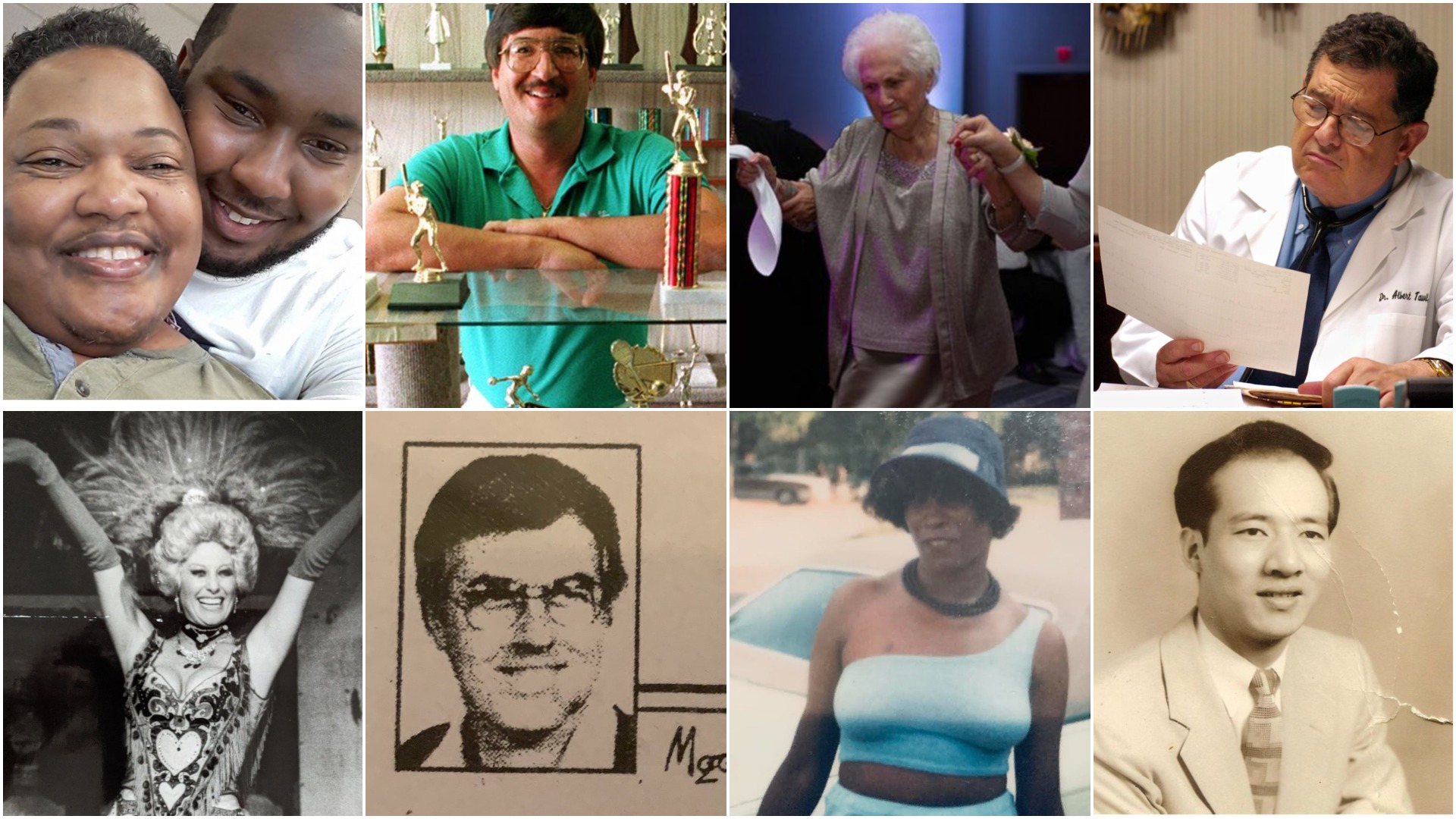
Pictured top, left to right: Garlynn Boyd, Joe Lupacchino, Mary Poniros and Dr. Albert Tawil. Bottom left to right: Ann Hodges, Jim Moorhead, Rita Mosely and Mar Fee “Yee” Moon. (Submitted photos)
Lessons from writing about the dead
I used to dread calling a family member after someone’s death to start the reporting process. It took me some time to realize that’s because that isn’t where the process should start.
Here are the steps I’ve learned to take:
Read the obits: I open up the Tampa Bay Times’ site and go to obituaries. The Times uses Legacy’s platform, and it’s easy to skim over the obits in search of great stories. I find a lot of stories to report this way, including the woman who wrote a thriller based on her groundbreaking career in the federal government at 88; a beachfront regular who carried the warmth of Hawaii with him in Florida; a world-renowned concert pianist; and a woman who ran a local Thai restaurant for 14 years.
I scan the websites of local funeral homes regularly for obituaries that aren’t in the newspaper. This step helps me find the stories of people, often people of color and women, whose families don’t take out lengthy and expensive obituaries in the paper. (I wrote about some issues with paid obits previously.)
I also get suggestions for people to feature from the newsroom and people in our community, who reach out and share ideas pretty regularly. To encourage this, my stories include a call to action that invites suggestions and a link to my email.
Make the pitch: If you’re cold-calling someone who is grieving, lead with empathy. I’m sorry for your loss. Explain what you’re doing with this work. And be explicit that you’re a journalist and this is not a paid obit. Don’t assume people understand how journalism works. Explain the process upfront.
Slow down: This won’t be a popular opinion among some news desks, but I think it’s OK to give people a little time before reaching out to write about their loved one. If someone’s death doesn’t warrant a news obit because they’re not famous, I usually try to give the family a few weeks or even a month. Grief comes with fog and a long to-do list of arrangements and obligations. I’ve found giving people some time to process leads to better stories and a more humane experience for many who’ve never talked with a reporter before. I might be sacrificing pageviews for that, but it’s worth it.
Research background: I’m lucky to get to work with Poynter’s Caryn Baird each week. I send her a name and any details I have about a person, and she sends me back any background info I can’t find on Google, including police, traffic and court reports. This rarely deters me from writing about a person, but if we’re devoting space to telling their story, I want to make sure there’s nothing hiding, like a history of abuse.
I Google them, too, to get a sense of them from a digital footprint. This also often helps me find family members, who are my first point of contact.
Search the archives: The Tampa Bay Times’ online archives and Newspapers.com are rich resources for me each week. I often find photos and even a person’s own voice. I use these regularly and loved, for instance, hearing a drag queen’s young voice as she tried to get out of her hometown while bound for the stage in Orlando. I let old news stories show a concert pianist’s life as a child prodigy.
Cast a wide net: When I started this reporting, I asked a question again and again that always clunked — What are the stories you’ll tell about this person in a few years?
I was trying to get past the platitudes people share after someone dies and capture what made them who they were — not just brave and giving and creative, but someone who broke gender barriers in her career or helped her students navigate their industry or organized a kazoo marching band.
I want specifics, and those are hard to grasp just after death.
My question about the stories they’d tell came from my own experience with my dad’s death. The stories my sister, stepmom and I tell embody who he was, and that’s what I want these obits to do. But no one I interviewed could ever answer it.
I finally realized that’s because I was so much farther away from death and grief, it was easier to see. So, I started asking different questions, and I’ve found the stories I’m hoping for bubble up naturally. I always start with this: What do you want me to know about this person?
Ask for quirks: I can’t, in 700 to 1,000 words, offer an accounting of a person’s life or character. I also don’t need to add polish to the tarnished spots. A gentle way to get a fuller picture of who a person was comes from asking about their quirks.
This helped me understand how particular a university math professor was — his wife sewed an extra button into his dress shirts so they’d close completely at the neck. It showed the character of a man with no family — he worried about paying his bills and kept a jar of peanut butter on his nightstand. And it showed how a pastor thought through everyday life — when something struck him (from a conversation to a scene in “Black Panther”) he’d declare “that’ll preach!”
People often share silly quirks, but sometimes they offer more revealing ones, like what a demanding diva the queen of dinner theater could be.
Use more photos, write better headlines: Early on, we missed a real opportunity to draw digital audiences by only having one photo and weak headlines. We corrected that after a few months, and the difference in traffic shows it.
I now ask families for as many photos as they’re willing to share and often combine them into collages in the stories. I also try to workshop headlines in a dedicated Times Slack channel, and they always turn out better than what I come up with. We’ve found names don’t perform well in headlines, but cities, businesses and neighborhoods do.
We took the word “Epilogue” out of our headlines. It’s a print brand that doesn’t mean anything to people scrolling on Facebook, Instagram or Google. And we’ve learned to use the headline as a place for news and a promise.
So, for example, we went from this: Epilogue: A toast to the Diamond Lady to this: Bennigan’s. Chili’s. Beef O’Brady’s. St. Petersburg restaurateur dies at 83.
Submitted photos and strong headlines don’t change the heart of these stories. But they do give them a way better chance of getting read.
Use the captions well: There are often details people want me to know that aren’t going to make the story: Where a person was born, the awards they received, even quotes I can’t fit in. I’ve learned to use the photo captions as a place to put some of what would otherwise not make the story.
Fact-check: This is something I promise upfront to the family members and friends I talk to. With one person for each obit, I will go over every detail I’ve learned and make sure the person they know is recognizable. I don’t read it to them or send them a copy. And I’m not there to erase flaws or boost virtue. But I do check both details and context. This takes me 10 minutes and ensures there are no surprises. I want to get an accurate sketch of a person and their life. Through that process, I’ve tweaked a word here or there, but never had to make any substantial changes. I hope I’ve also built trust with that person and family.
This is also the right time to make sure you’re using the language people want: Do you prefer Black or African American? Is it OK to switch between her drag name and his birth name depending on context? Is there an accent mark?
Now is the time to get the details right.
Make space for feelings: Death can bring up a lot of complicated feelings for people. I’ve learned to expect that, to make space for slow interviews, fuzzy memories and frequent breakdowns. When interviewing siblings, I often ask if there will be issues from me not talking to each sibling or at least naming them. Some people don’t care. Some really do. With combined families, I request photos that include all the kids and stepkids.
A question I sometimes ask is, “Who am I going to get an angry call from the day after this runs?” And when I hear something about a subject from one person, I run it by the other people I talk to.
This work is a bit like being a police sketch artist, drawing from someone else’s memory and emotion, and I’m aiming to make a person recognizable.
Work with the social team: I’m at a small disadvantage because I don’t work full time at the Times, but I’ve started to learn how they work best and it’s made a huge difference in how the stories perform. The advice here is to learn how your team works and work with it. These stories need an audience.
Stay in touch: After a story runs, I always send a link and the e-edition to anyone I spoke with. For key family members, I also ask them to let me know if I made any errors and that I will correct them. The benefit is a) It’s the right and decent thing to do, and b) It puts a value on relationships over transactions. On death anniversaries, I’ve heard back from families grateful for the care we took. That relationship led to one follow-up story that wouldn’t have happened otherwise.
Use your work as a calling card: When I cold call someone, I offer sympathy for their loss, explain how the process works, and then often offer to email them links to other stories I’ve done. That always opens doors for people who are hesitant.
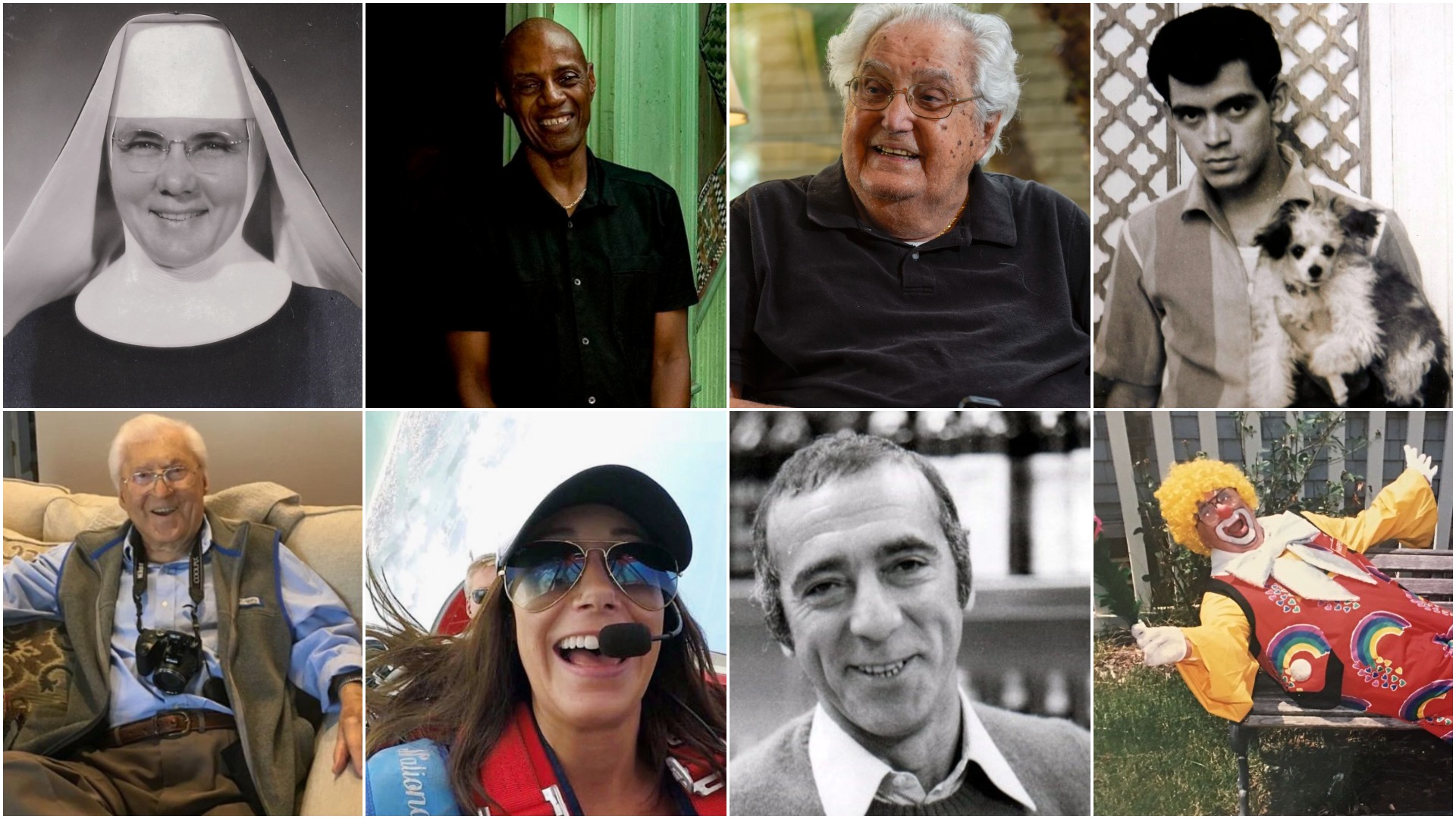
Pictured top, left to right: Sister Helen Lange, Willie Robinson Jr., Raul Lavin and Raymond Castro. Bottom, left to right: Bob Rans, Shelby Hilton, Guido Tiozzo and Bernie Herman. (Submitted photos)
Lessons from launching an obits newsletter
An obits newsletter is depressing, right?
I hear that sometimes – but I find this newsletter is really a place to connect, remember what we have in common, reflect on our own lives and learn about other people.
The newsletter was part of the pitch for my fellowship. The idea: Use a weekly newsletter to share stories behind the obits, link to snippets from paid and local obits, drive people back to the Tampa Bay Times and build new audiences.
We launched How They Lived in early December 2020. It comes out on Tuesdays, one day after the obits run online. It has 689 subscribers, and a 42% open rate. At least one of those subscribers writes me back every other week.
The format is pretty simple and short, and that means it’s not time consuming for me, editors or subscribers.
Each week I share something from a recent reported obit — a backstory, how I found it, how it connects with similar stories. I’ve shared subscriber stories, including the couple who spent years collecting euphemisms for “died,” drawn from the archives, dug into my family’s old obits and detailed what I learned when I called a local funeral home about their pet obits. I’ve looked for Times reporters who’d be perfect for this little community. So far that’s included the reporter whose work has uncovered lost Black cemeteries, a reporter and editor who spoke with people who’d lost loved ones ahead of the Super Bowl, and the humor columnist who got her start writing feature obits. I also used the newsletter to rewrite the obits of two women who deserved better.
Each edition, I include several photos. And I end with snippets from several paid or local obits.
Here are some of my favorites:
Jean Foglesong, 89, of Riverview “traveled throughout the United States, visiting most states and collecting souvenir spoons to prove it.”
Anita Tannuzzo, 95, of Tampa “served in the Civil Air Patrol and worked at Hallmark cards” before college, was a teacher, “traveled to the National Geographic Expedition to Antarctica” and “took pleasure in being the ‘oldest’ in any crowd, and when asked the secret to her longevity she’d say, ‘Tennis every morning and a piece of dark chocolate every evening.'”
Samuel Salario, 91, of Tampa “went to the Great Spaghetti Factory. … He was generous in spirit and as loyal as they come and was a second father to many. He also liked hamburgers.”
Cozee Smith, 71, of Tampa “was exceptionally good at orchestrating elaborate events including large sales productions of dancing bankers and private dinners for corporate clients. Her exquisite decorating of a 30-foot Christmas tree in the lobby of 200 Central Ave brought joy to all of St. Petersburg.”
Dulce Maria Baez, 96, of Tampa “sacrificed her own needs by being very frugal in order to help others.”
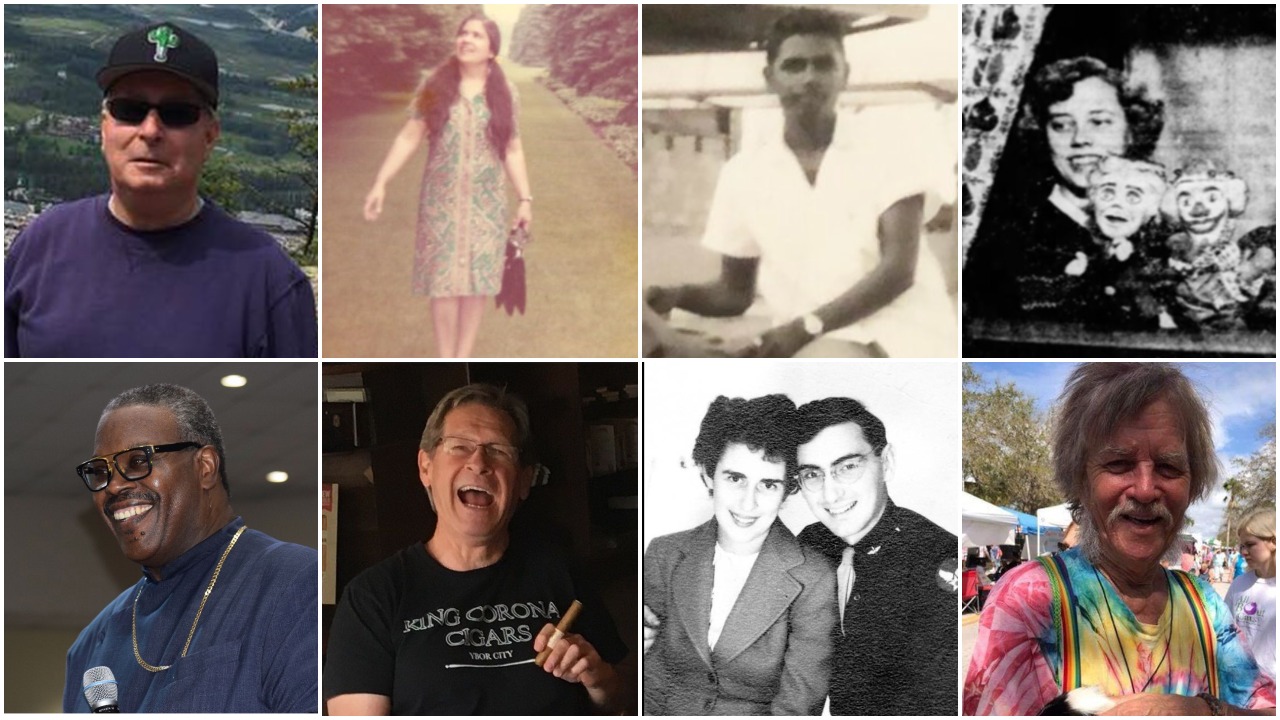
Pictured top, left to right: Michael Konrad, the Rev. Esther Gonzalez, Deo Persaud and Mary Margaret Winning. Bottom, left to right: Bishop Matthew Williams, Don Barco, Bud and Enez Hart and Jim Igler. (Submitted photos)
Connecting with our community
A critical piece of finding the voice and purpose of this newsletter came from an unexpected place — a student run advertising agency, AdZou, at the University of Missouri. I extended my fellowship to work with them as a client.
They conducted quantitative research through a survey that reached 334 people in 16 states. They also held one-on-one interviews. Their early findings helped steer How They Lived.
Here’s what they shared with me:
“We are talking to consumers who are ageless characters that want to feel a common bond with the people in their community. They seek connections any chance they can get, may that be the news they consume, in the communities they live in or any meaningful experience to them.”
The target audience the class identified: “Multidimensional connection seekers.”
They presented a marketing plan to me in May, and it puts into three words what the newsletter and feature obits have the power to do: Community, Unity, You.
Obits have the power to remind us of our communities, of what we have in common and what we’re doing with our own lives. Local newsrooms still have that opportunity, too.
I plan to continue this experiment and hope to grow the newsletter. Want to try it for yourself? I’ve already heard from one newsroom that launched its own obits newsletter. If this work, any part of it, is something you’re interested in experimenting with, please reach out. This is journalism local newsrooms can and should be doing.
“I don’t read the obits to find out how they died,” one person told the MU students, getting right to the heart of this work. “I read the obits to find out how they lived.”
This article was originally published June 15, 2021.


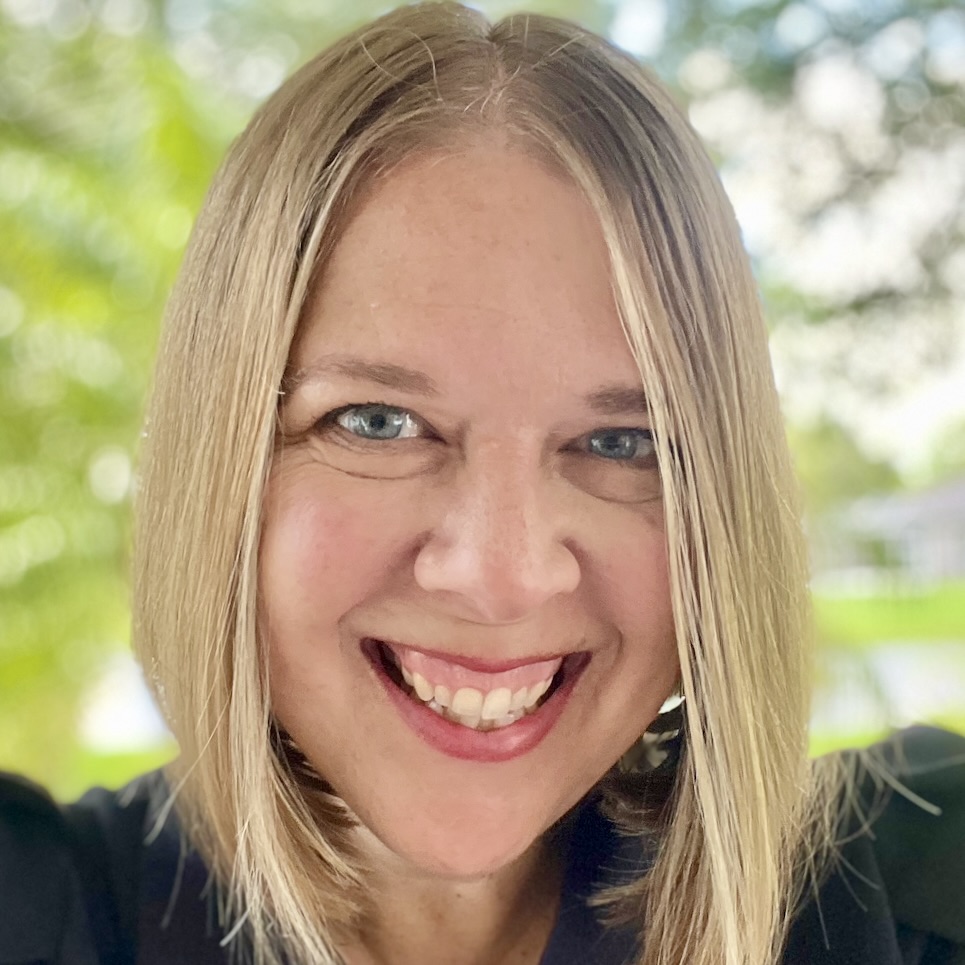





Wonderful, Kristen. I’m in total agreement–especially about the historical value of obits. Wanted to add a link to my 8-year-old piece about arguing for obits when one hasn’t appeared. https://www.poynter.org/reporting-editing/2013/last-rite-of-friendship-a-journalist-lobbies-for-an-obit/